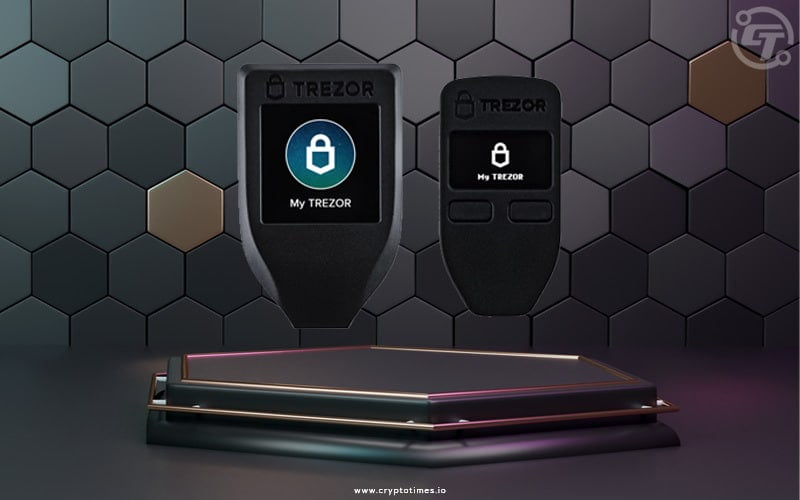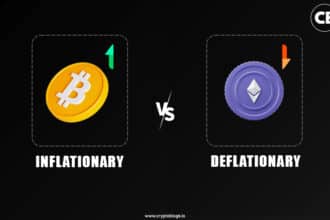In the last decade, with the development of digital assets such as cryptocurrencies, stablecoins, and others, the need for a secure and reliable platform to store has also grown. Throughout the decade many different innovations in crypto wallets took place and out of all these innovations Trezor Hardware Wallets emerged as one of the most secure hardware wallets.
What is a Trezor Wallet?
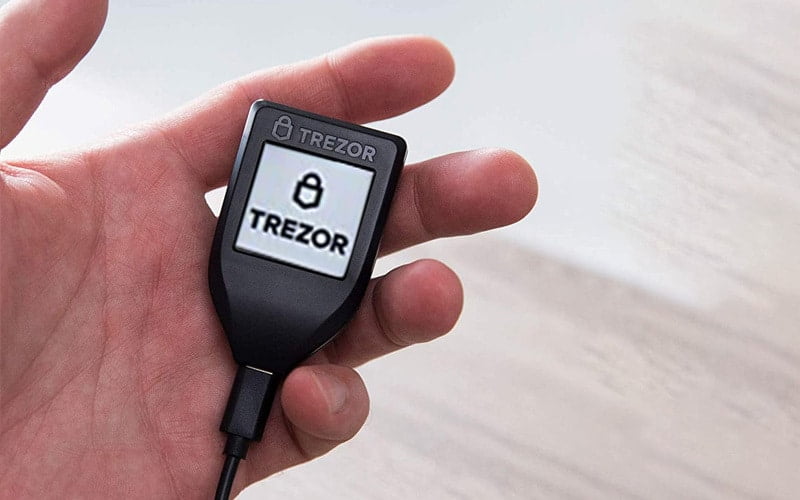
Trezor Wallet is the first cryptographic hardware wallet that provides access to digital assets such as cryptocurrency and non-fungible tokens (NFTs) to the users. Trezor Wallet provides top-notch security to users’ digital assets. In its physical appearance, it looks similar to USB devices that could connect with any device such as a mobile, computer, laptop, tablet, and others.
Here keep in mind that no digital wallet stores any sort of cryptocurrencies or other digital assets within it. It just provides you access to your cryptocurrencies.
Trezor Wallet was introduced in 2014 by SatoshiLabs which provides high security for cryptocurrencies with a convenient interface. Trezor wallet provides secure cold storage for different crypto tokens including Bitcoin, Ethereum, Binance Coin, Tether, Cardano, Ripple, and others.
Trezor Wallet is a USB stick-like device with two click buttons and an OLED screen on top for showing relevant information. It is immune to malware and never exposes your private keys. Thus, making it as safe as holding traditional paper money.
Trezor wallet is an open-source, transparent, and easy-to-use device. It has a very intuitive interface and is compatible with Windows, OS X, and Linux. You can connect it to iOS and Android mobiles as well as tablets using an USB port. It is best advised to use the hardware wallet via Google Chrome and Mozilla Firefox browsers for guaranteed support.
Currently, the official site of Trezor says that it supports about 1816 coins & tokens, including the primary ones like Bitcoin, Ethereum, Cardano, Tether, Doge, etc.
How does a Trezor Wallet Work?
Trezor Wallet is a single-purpose wallet that contains encrypted private keys in its flash memory. By connecting the hardware wallet to a device, the user can get access to its cryptocurrencies on the network through private keys.
As we all know, cryptocurrencies have been built upon the blockchain ledger technology, which leverages it to store and record transactions of every individual digital address. Hardware wallet activates a crypto address that holds your cryptocurrencies when you enter the private key required for access.
Also, the Trezor wallet enables a second layer of protection while accessing the blockchain network even when connected with the device to your transactions.
Trezor ensures the security of the cryptocurrency stored inside it and prevents different online and offline threats. Although, you can not fully trust any digital wallet or service provider. Do your own research, before selecting a crypto wallet as there are different types of crypto wallets available in the market.
The private key linked to your Trezor Wallet links your crypto address to the network only when inserted into a USB port on your PC, laptop, or phone.
Trezor keeps private keys away from the system or sets up connections with the internet. It takes the process offline from the network in order to confirm transactions. Furthermore, no one has access to the information contained in the wallet.
Types of Trezor Wallet
Currently, there are two types of Trezor Wallet available in the crypto market Trezor One and the second one is Trezor T. Let’s understand each of them in detail.
Trezor One
Trezor One is the first-generation wallet launched back in 2014. Trezor One only has a single purpose which is to store cryptocurrency. It contains fewer features and average UI features.
Features of Trezor One
- Created from ABS Impact Resistant ABS Plastic
- Uses ARM Cortex M3 running at 120MHz Processor
- Built upon STM32 F2 Microcontroller
- Contains 128 x 64 OLED Display
- Compatible with Windows 7+, Linux, macOS 10.11+, Android
Trezor T
Trezor T was launched back in 2018 and has advanced and special features in comparison to Trezor One. It also has an attractive UI such as a colorful LED touch screen, SD card Slot, and Secure Device Input.
Features of Trezor T
- Built out of ABS + PG Plastic with Ultrasonic Welding
- Uses ARM Cortex M4 Processor Running on 168 MHz
- Embedded with STM32F4
- Covered with 240 X 240 RGB LCD Display
- Compatible with Windows 7+, Linux, macOS 10.8+, Android.
Main Key Features of Trezor Wallet
“We’ve covered the different types of Trezor wallets, the Trezor One and Trezor T, including what sets them apart and their unique features. Now, let’s dive deeper into the key features of the Trezor wallet.
Trezor gives you 100% control over your private keys. A 24-letter recovery seed backs up the entire content of the wallet. The original 24-word seed is generated using RNG (Random number generators) from the device and the computer.
The seed is generated offline and displayed on Trezor’s screen, ensuring that it is never stored on an internet-connected device. As an extra degree of security, you can add a second passphrase that acts as the 25th letter.
When configuring your Trezor for the first time, you’ll need to generate a PIN code. Here keep in mind that Trezor burns itself after 16 incorrect attempts.
If your Trezor is lost or destroyed, you can retrieve the whole wallet using the 24-word seed and passphrase. You can get your funds back by using another Trezor Wallet.
The screen on the Trezor helps you to confirm that you are sending to the correct person, but this does not protect you from phishing attacks.
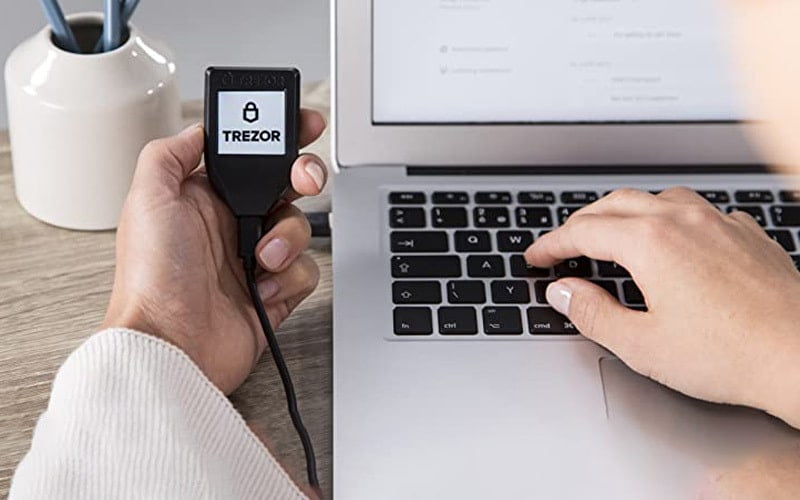
Trezor hardware wallet is one of the highly secured crypto wallets for big amounts of cryptocurrencies. It is reliable for the crypto whale to secure their investment into crypto from the on-chain threats and ramifications of transactions. Some special features include
Firmware Verification
Trezor warns users of signature verification from the bootloader that does not sync with Sathoshi Labs.
Secure Key Management
Private Key and Public Key both are locked with the security PIN and without a PIN it is next to impossible to check keys.
Additional Passphrase Support
Trezor supports the mnemonic phrase ‘BIP39’ for the secured login and to connect with any protocol or dApps.
Backup & Recovery feature
In case if hardware wallet gets damaged or lost and you lose access to your crypto assets, Trezor provides you with a secured recovery seed to restore the connection with your lost fund during the initial setup.
However, if you forget your recovery seed, there will be no other way to recover the fund. So, it would be preferable if you note down this seed phrase in a secure place or somewhere on the paper. (Avoid Saving it on PC or Mobile)!!
Secure Update Process
The bootloader will erase and update the memory only after successful firmware verification.
Apart from this, Trezor is also fortified with other security features such as U2F (second verification authentication), Password manager, SSH login, and others.
Perks of Trezor Hardware Wallet
The Trezor hardware wallet stands out for its robust security features, ensuring your digital assets are safe from hacks and unauthorized access. It’s incredibly user-friendly, making it a breeze for both beginners and seasoned crypto enthusiasts to navigate. Plus, its compatibility with numerous cryptocurrencies means you can manage all your assets in one place. Let’s have a glance at its perks in detail.
Full Control Over Your Digital Assets
Trezor hands you full control of digital assets without the involvement of a third party. Also, its hardware form prevents threats arising from on-chain transactions.
Transparency
Trezor is an open-source wallet. Anyone skilled in programming can verify the code and check that nothing is hidden from the public.
Secure Environment
It is not possible to inject any software, malware, or malicious codes into the Trezor hardware wallet, because it provides strong protection against computer exposures and malware.
Frequently Asked Questions (FAQs)
1. What Cryptocurrencies can Trezor Wallet Support?
Trezor Wallet currently supports 1816 different coins and tokens including famous cryptocurrencies such as Bitcoin, Ethereum, Binance Coin (BNB), Tether, Cardano, Ripple, and others as well as meme coins including Dogecoin and SHIBA INU along with many others.
2. Does Trezor Wallet Support NFTs?
Trezor Hardware Wallet does support NFT transactions by leveraging the third-party interface such as Metamask. Users can store their NFTs as long as the wallet stays connected with the network. To store NFTs on Trezor, it will require a secret seed for authentication on the network.
3. How many Blockchains does Trezor Hardware Wallet Support?
Trezor wallet provides support for more than 30 blockchains including Bitcoin, Ethereum, Cardano, Ripple, Tezos, Tron, Binance Coin, Dogecoin, and others.
4. Which is the Best Wallet between Trezor and Ledger Hardware Wallet?
This query doesn’t have a definitive answer. However, you can compare Trezor Wallet to another popular hardware wallet Ledger on a fair basis.
Difference Between Trezor Wallet and Ledger Wallet
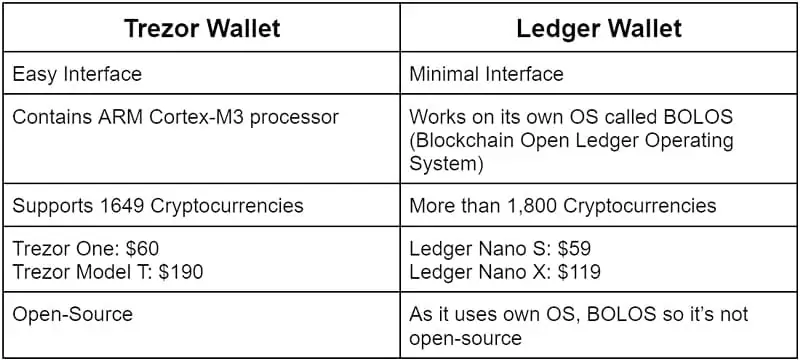
Read more about Crypto Wallets


